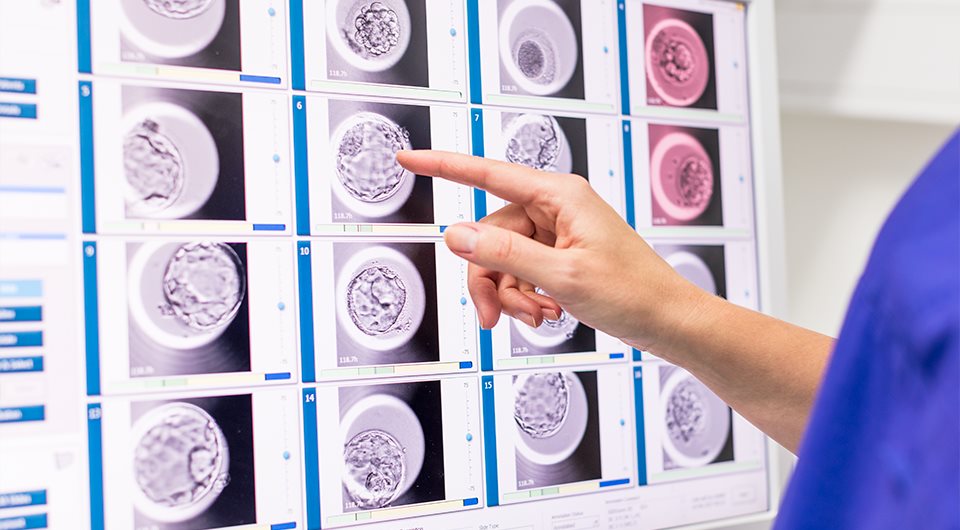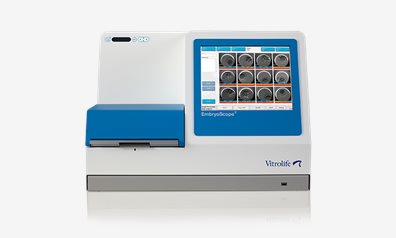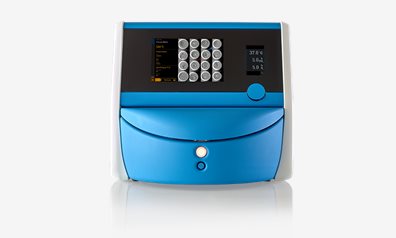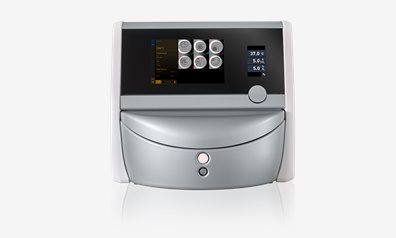
EVALUATION TOOLS
Decision support tools scoring embryos according to their statistical viability by applying a number of criteria to the embryos.
Purpose: For embryo evaluation.

Decision support tools scoring embryos according to their statistical viability by applying a number of criteria to the embryos.
Purpose: For embryo evaluation.
Traditional evaluation of embryos limits the amount of information about embryo development. Using time-lapse analysis, you can detect previously unseen embryo development patterns and events which have been correlated to clinical outcome. With EmbryoViewer software and Guided Annotation, you can analyse high quality videos of embryo development and easily register the information you need about each embryo to make evaluation efficient.


With EmbryoViewer software, you can achieve improved selection, or de-selection, of embryos by a combination of discovering both morphological and morphokinetic parameters. Important parameters such as the dynamic morphology, critical cleavage patterns and morphokinetics can only be observed with time-lapse technology.
Traditional embryo assessment has been reported to miss more than 70% of embryo multinucleation while more than 20% of embryos have been reported to go through an abnormal cleavage pattern. Such patterns can only be precisely determined by the use of time-lapse.1-4
With EmbryoViewer software, you can review, annotate and compare development of selected embryos from data acquired by the EmbryoScope and EmbryoScope+. The same EmbryoViewer software can be used for both types of incubators. The incubators’ running conditions are automatically stored with the patient data and can be observed on the EmbryoViewer software for quality assurance.


With EmbryoViewer software, you can annotate cell division events, providing an easy overview of observations in developmental stages.
Use Guided Annotation in the EmbryoViewer software to efficiently get the parameters you need for embryo evaluation. Designed to provide a simplified annotation workflow.
KIDScore™ decision support tools* assigns an objective score to each embryo. The scores reflect implantation potential and provide consistent and effective support for embryo evaluation. With Guided Annotation and KIDScore decision support tools you can customise to fit the workflow you like with the level of automatisation you prefer.
*KIDScore D5 has not received 510(k) clearance
Guided Annotation is an added, optional tool in the EmbryoViewer software designed to provide a simplified annotation workflow. Based on artificial intelligence, Guided Annotation provides a perfect balance of control, accuracy and efficiency – ensuring fast, precise and consistent analysis of embryo development based on your needs for information before embryo selection.

With the extensive amount of image information acquired by the EmbryoScope time-lapse system, every stage of development of each embryo can be observed. Guided Annotation ensures that you collect exactly the amount and type of embryo development information that is necessary for you to evaluate which embryos are most suitable for transfer and/or freezing.
By implementing intelligent software tools and artificial intelligence, Guided Annotation makes embryo annotation fast, efficient and precise and allows you to have complete control of the level of automatisation. A confidence estimate allows you to automate annotations that have a high confidence level and prioritise validation of annotations with low confidence.
The Guided Annotation tool uses image analysis to guide you to likely timings for developmental events like division timings, morphology assessment and PN check. Simply validate or score the event by a single keyboard click.

Based on the annotation strategy, Guided Annotation automatically prompts you to annotate the selected variables. A continuous overview of the process is provided.

An efficient workflow is easily achieved by utilising customised annotation strategies in combination with the intuitive and ergonomics friendly keyboard shortcuts.

Define an annotation strategy, or determine which predefined annotation strategy to use, and collect consistent and valuable information by all staff.
Guided Annotation in synergy with KIDScore optimally supports your consistent embryo evaluation process.

KIDScore assigns an objective score to each embryo. The scores reflect implantation potential and provide consistent and effective support for embryo selection.
The KIDScore decision support tool is developed by analysing the world’s largest database of embryo development with known clinical outcome. The models are developed by analysing how embryo morphokinetics, cleavage patterns and morphology correlates with implantation outcome after transfer.


When to use it
KIDScore D3 assigns a morphokinetic score from 1-5 to your annotated embryos. The score from 1-5 is a relative measure of the implantation potential of the embryo. The following variables need to be annotated in accordance with specific guidelines: PN assessment, PN fading, time (t) to 2, 3, 4, 5 and 8 cells.
The chart represents unselected embryos, embryos chosen for transfer, implanted embryos and embryos resulting in a live birth from cycles where known outcome data is available. The distribution of embryos across score groups is shown. This indicates that there is excellent concordance between the model and embryos with high implantation potential.
When to use it?
KIDScore D5* considers the morphology and the morphokinetic traits of an embryo. For each embryo the model calculates a continuous score from 1-9.9. The score reflects the statistical chance of implantation based on development information from the five-day culture period. The higher the score, the greater the statistical chance of implantation. Only a few annotations are required to obtain a score, which further improves the worfklow.
KIDScore D5 scores show an increased relative implantation with higher scores. The model is based on a large database of KID blastocysts originating from a wide range of IVF clinics.
*KIDScore D5 can only be used when culturing under reduced oxygen conditions.

We have seen improved IVF outcomes since we introduced EmbryoScope time-lapse system in 2013. We owe it to our patients to use time-lapse - to give them the best possible result.
Dr. Markus Montag has written a white paper where he discusses the clinically proven results with time-lapse, as well as how time-lapse can improve the workflow in the lab and facilitate communication.
DOWNLOAD WHITE PAPER
EmbryoScope, the world’s firstEmbryoScope time-lapse system continues to offer safe embryo management through a platform of products and services.

EmbryoScope+, making time-lapse standard of careEmbryoScope+ is designed to meet the needs of clinics wishing to implement time-lapse as a standard of care to more of their patients.

EmbryoScope Flex, ideal for mild stimulation & low responder patientsExpanding your possibilities to offer time-lapse as a standard of care to more patients.
1. Ergin, E.G. et al., (2014), Fertil Steril 102(4): 1029-1033 e1.
2. Data on file.
3. Rubio, I. et al., (2012), Fertil Steril 98(6): 1458-63.
4. Zhan, Q. et al., (2016) PLoS One 11(12): e0166398.
5. Sundvall, et al., (2013), Hum Reprod 28(12): 3215-21.
| Evaluation tools Technotes |
Technote Guided Annotation - setting up
This technote describes how the Guided Annotation tool is set up in a completely customisable way to support the needs and strategies of your clinical workflow. This tool is designed to support the busy workdays in the laboratory and guides you from variable to the next in an annotation strategy and by automatically forwarding the embryo images to estimated timings of events. Guided Annotation in synergy with KIDScore models otpimally supports your consitent embryo assessment process.
| Evaluation tools Technotes |
Technote Guidelines for blastocyst morphology grading with time-lapse
This technote describes the grading of blastocyst morphology with the use of time-lapse technology. This facalitates a more thorough evaluation because the complete course of development can be considered. A comprehensive impression of the blastocyst can be used as the basis for grading morphology, which should be utilised when grading ICM and TE and is neccessary when using KIDScore D5.
| Evaluation tools Technotes |
Technote - Consistent annotation for better evaluation - a guide on definitions for morphokitetics
This technote describes the definitions of variables most commonly used in embryo assessment with time-lapse. These definitions will help you attain consistent annotations and thereby objective evaluations in your clinic and further streamline the understanding of embryo developmental events within the clinic and beyond the clinic.
| Evaluation tools Technotes |
Technote Exporting data from the EmbryoViewer Software
This technote provides instructions on exporting data from the EmbryoViewer Software. In order to analyse your morphokinetic data, you will need to export to a file format which is easy to use with data analysis programs.
We provide what you need to secure improved results throughout the IVF journey.